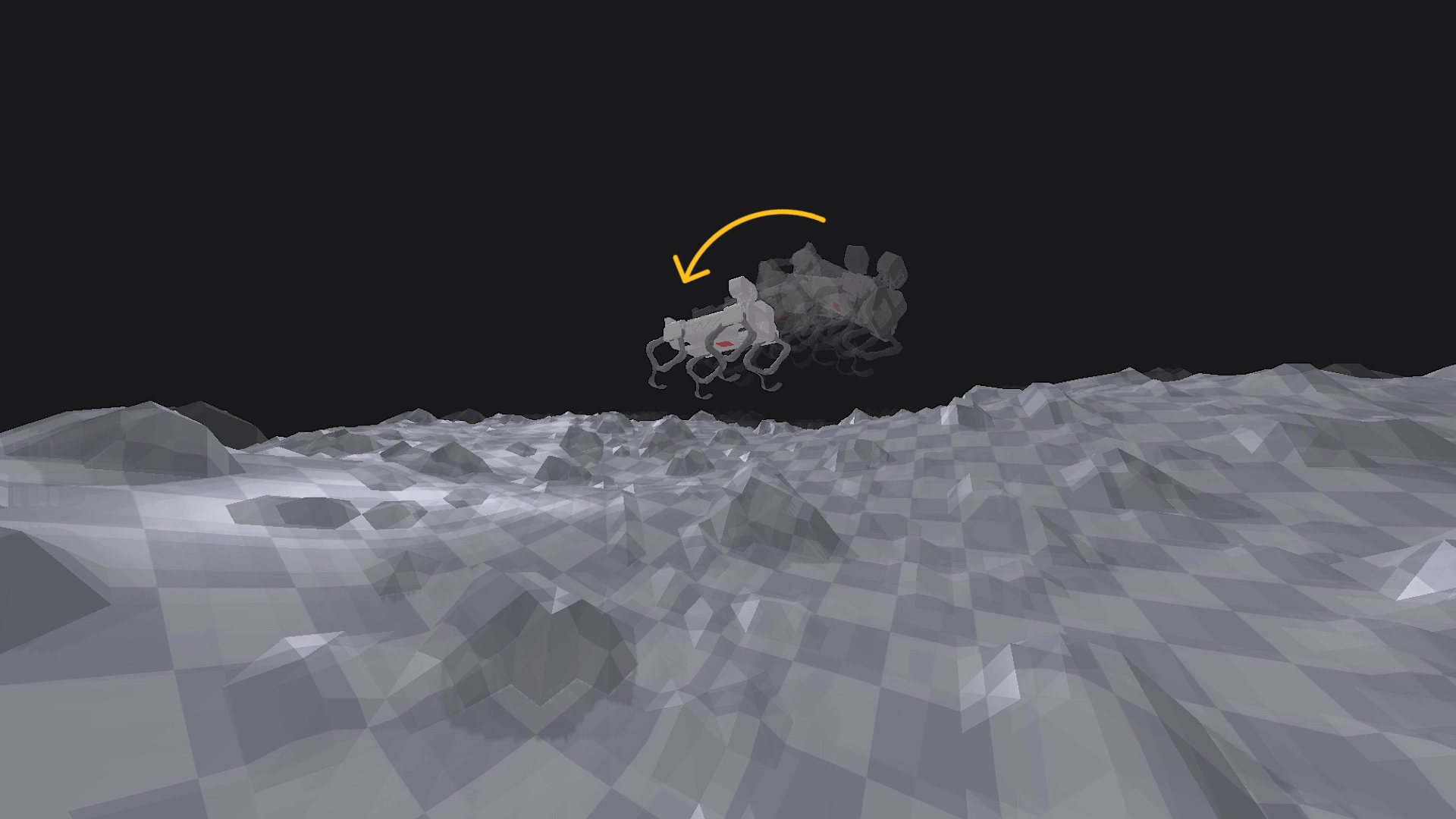Modeling Attitude Control in Microgravity
Building on earlier empirical and simulation-based work, this month focused on defining the mathematical model that describes how internal leg movements can influence the robot's global orientation in microgravity. The system was modelled as a non-holonomic free-floating body, with no external torque or fixed base. As in the classic falling cat problem, reorientation must emerge entirely from internal actuation - specifically, coordinated changes in the robot's limb configuration. The body was described with 6 DoF, but control efforts focused on roll (ϕ) and pitch (θ). Each leg has 2 DoF (extension and swing), giving 8 independent inputs. Using this, the control problem was defined as an underdetermined linear system, where the Jacobian:

maps joint velocities to changes in roll and pitch rates:

Reorientation and Bandit-Based Autonomy
 Watch: Self-reorientation attempt using Contextual MAB
Watch: Self-reorientation attempt using Contextual MAB
During November and December, the project's focus shifted toward a more abstract - but mission-critical - aspect of legged mobility: attitude control and self-reorientation in microgravity conditions. While locomotion on uneven terrains remained a long-term goal, this phase initiated the development of strategies for reorienting a free-floating rigid body using only internal leg motions, without relying on external contacts or torque sources. This involved modelling Continuity as a non-holonomic system in microgravity, where angular momentum is conserved, and reorientation must occur through the redistribution of internal masses - specifically, the four legs. The problem setup mirrors the classical "falling cat" scenario, where a free-floating body must execute sequences of internal movements to rotate in space despite zero net external torque.